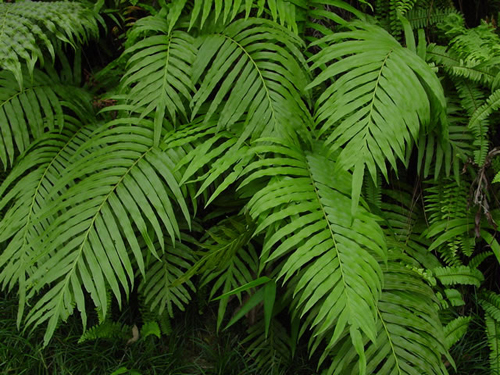Dryopteris fragrans (scientific name: Dryopteris fragrans (L.) Schott) is a plant of the Dryopteris family and the genus Dryopteris. The plant is about 20-30 cm tall. The rhizome is erect or obliquely ascending, and the top and the base of the petiole are densely covered with reddish brown, membranous, ovoid or ovoid-lanceolate. The leaves are clustered, and the petiole is usually only 1-2 cm long; the leaves are long round-lanceolate, 10-25 cm long, and the middle part is about 2-4 cm wide. The apex is short and acuminate; the vanes are about 20 pairs, spread obliquely, close to each other. Leaf herbaceous, brown on the top and brown on the bottom after drying, smooth on both sides, with bright brown lanceolate scales and glands along the leaf and rachis. The sporangia are round, born on the small veins on the back; the sacs are membranous, round to round kidney-shaped, with sparsely serrated edges, large, close to each other after maturity and often extend beyond the edge of the leaf, with glands on the back . The spores are oval, with tumor-like protrusions on the peripheral wall.
Distributed in China, Russia (Far East), Japan, North Korea and even Europe and North America. It is distributed in Heilongjiang, Jilin, Liaoning, Hebei, Inner Mongolia, Xinjiang and other provinces in China. It grows in the forest at an altitude of 700-2400 meters.
According to folk prescriptions in northern China, Dryopteris can treat various skin diseases such as psoriasis, rash, dermatitis and acne. It has very obvious therapeutic effect on senile skin pruritus, juvenile acne and flat warts. It is a kind of development. Potential and application prospects of rare wild medicinal plant resources.
Included in the "World Conservation Union Red List of Endangered Species" (IUCN 2016 ver 3.1)-non-endangered (LC). Included in the "China Biodiversity Red List-Higher Plant Volume" (September 2, 2013)-no danger (LC).




